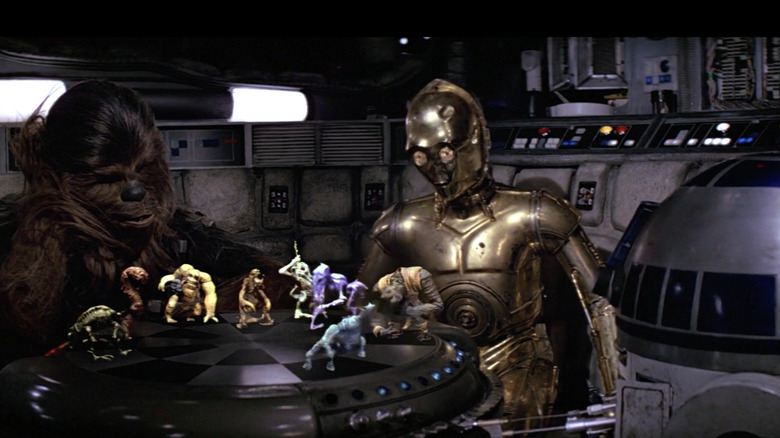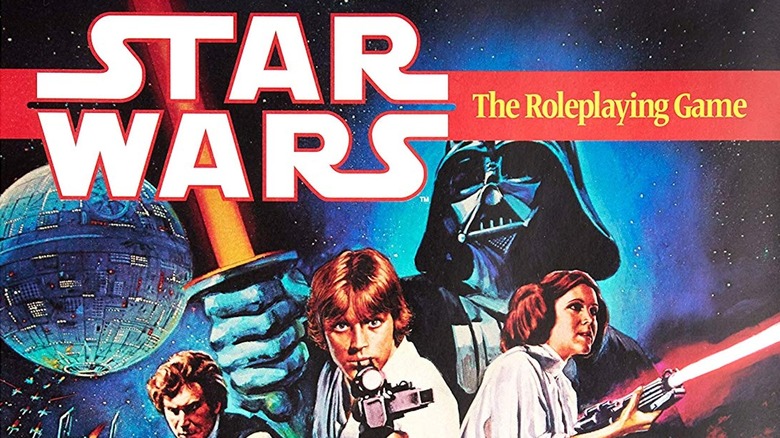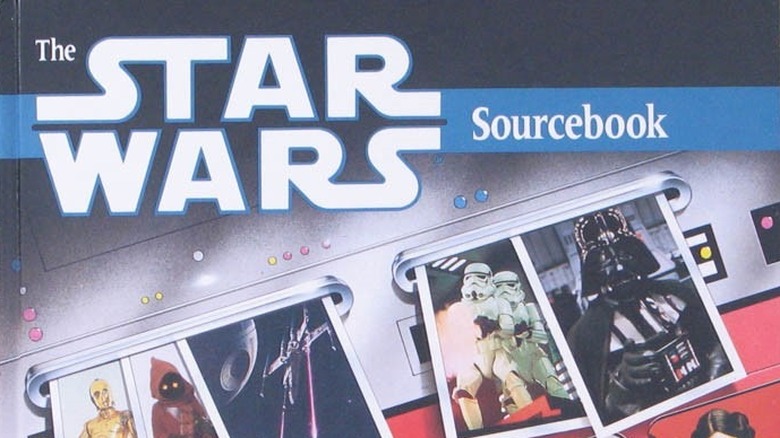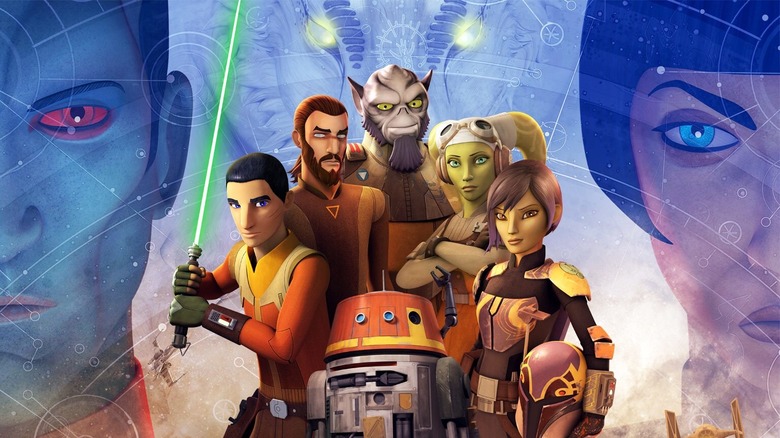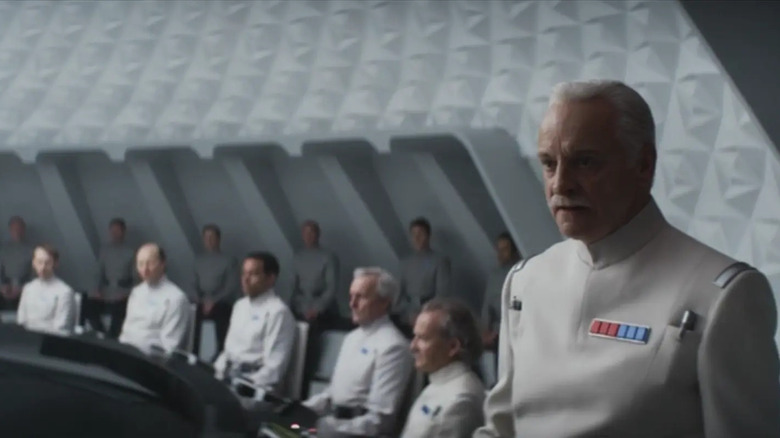The Modern Star Wars Universe Owes Its Existence To An RPG Most Fans Have Never Played
When "Star Wars" came out in 1977 and there were associated toys and novels, there wasn't really a vocabulary for anything beyond what was seen in the movies. That's why you had toys named Hammerhead and Snaggletooth. It persisted through "Return of the Jedi" more than half a decade later, giving you toys like Prune Face and Yak Face. No one really seemed to care. Kids just wanted to play with their "Star Wars" toys and the comics and books carried on, making up whatever names they wanted or skipped naming things altogether.
So how did "Star Wars" get its vocabulary? Why do we know that Hammerheads are really called Ithorians and that Snaggletooth is really a Snivvian named Zutton? You know what a Twi'lek is, right? And you know that the Imperial Center is Coruscant?
Well, the reason is simple: The 1987 "Star Wars: The Roleplaying Game" from West End Games. In a three-part series starting in Star Wars Insider #144, I was able to interview many of the folks responsible and get the story behind how things got their names.
The roleplaying name game
1987 was the 10th anniversary of "Star Wars," and West End Games had picked up the license to make a roleplaying game set in a galaxy far, far away. Bill Slavicsek was then an editor for West End Games and was very upfront with Lucasfilm. He said, "We told them that to do a role-playing game, we are going to have to expand your world, and are you okay with that? They said, yes, so long as they got to approve it."
Slavicsek (as well as a few other writers) went to work on the "Star Wars Sourcebook", never realizing how important this single tome would be to the future of "Star Wars" and have ramifications that would continue to stretch into the present.
"Well, a lot of that is thanks to me," Slavicsek explained to me in my interview with him for Star Wars Insider. "When I wrote the 'Star Wars Sourcebook,' I gave the Hammerhead the name Ithorian because it was insulting to call the whole race Hammerheads. So I put all the names together, Lucasfilm approved them and started putting them on action figures."
It makes sense, too, when you think about it. It's hard to play a pen-and-paper roleplaying game if you don't have the proper vocabulary for the world around you. Imagine trying to play "Dungeons & Dragons" and having to refer to Beholders as "those round things with lots of eye stalks" or Baldur's Gate as "that place over there." In order to create the immersion to tell stories at a table, you need to have a sense of things.
The Sourcebook proliferates
In the Star Wars Insider article, Pablo Hidalgo, who is now a creative executive at Lucasfilm and largely helps facilitate filmmakers in their journey to tell stories that feel like "Star Wars," explained how seeing the "Star Wars Sourcebook" changed his entire perception of the franchise:
"[...] seeing the first edition 'Star Wars Sourcebook' in a hobby store was thrilling. It presented a new way of thinking of 'Star Wars.' Rather than just three movies, it was as a cohesive setting. Before that, I had never really thought to wonder where the cantina aliens may have come from, or why the Rebel cruisers looked the way they did. The gamebooks essentially introduced me to a new philosophy of thinking of 'Star Wars,' which turned me into a trivia sponge."
But he wasn't the only one turned onto the gamebooks. Lucasfilm realized that they had a chance to make the universe cohesive, and when Timothy Zahn began his work on the first book of the Thrawn trilogy, "Heir to the Empire," they sent him a box of the RPG supplements for him to build his world. In that same Insider piece, Zahn told me:
"I realized that with all of this, I wouldn't have to reinvent the wheel every time I wanted a new ship or ground vehicle. I could just look and see if they had one first, and if it served my purpose, I could toss that in and not have to do it myself. I got a lot of background and information, I got alien species I could use, and I was very pleased with how well they had done in putting this together."
From there, everyone was using it and it's still used to this day.
Today's effect on Star Wars
The West End RPG books are highly influential in today's "Star Wars" landscape. Watching "Star Wars Rebels" and its continuation in "Ahsoka," one can almost see the edges of the game and its rules and character archetypes shining through. But that's not a coincidence either. Pablo Hidalgo explained that he's had to create a lot of briefs for creatives and newcomers working on "Star Wars" and he said that he still refers to the text block in the original roleplaying game that advises gamemasters on how to capture the feeling of "Star Wars."
Here's what that advice reads from the original 1987 book:
"You must keep the game in the 'Star Wars' spirit. The stories you create with your players must be the ones which could fit comfortably on the screen with the Lucasfilm logo at the end. If they aren't–well you may still have fun playing them, but you aren't really playing Star Wars. How can you do that? [...] Whenever you're given a chance, use something from the movies."
With Hidalgo offering this advice for the flavor of "Star Wars" to the creatives coming in, it's very likely that the original "Star Wars" RPG is going to have a continued influence in the further expansion of a galaxy far, far away.
Andor and Rebels
Two more recent examples that have leaned heavily on the use of the West End Games material have been "Andor" and "Rebels."
Fans of the old "Star Wars" RPG would have no difficulty recognizing the structure of the Imperial Security Bureau (which had its roots in the RPG in the first place) because it was all first printed in 1989 in the "Imperial Sourcebook" by Greg Gorden. In fact, the official "Star Wars" website called it out in trivia for the episode "Aldhani."
Another fun tie that came directly from the roleplaying game was the creation of the B-Wing in "Star Wars Rebels." "Strike Force Shantipole" was an adventure module published in 1988, written by Ken Rolston and Steve Gilbert. It documents a crew who has to escort Admiral Ackbar to Shantipole to retrieve plans for the B-Wing, a new fighter that could help turn the tide of the war. They need to get him, get the plans, and get back to Alliance High Command. This story was the inspiration for the in-universe, canon explanation for the B-Wing, casting Hera Syndulla in "Star Wars Rebels" as the rebel who has to go in and get the plans. Instead of Admiral Ackbar, another Mon Calamari was inserted into the episode. Quarrie (named after legendary "Star Wars" concept artist Ralph McQuarrie") is a Mon Calamari ship designer and the B-wing was all his idea.
There will undoubtedly be more inspiration from these books as we move forward in "Star Wars" and if you're into these connections, the West End roleplaying books are a good place to look for those Easter eggs and story inspirations.
